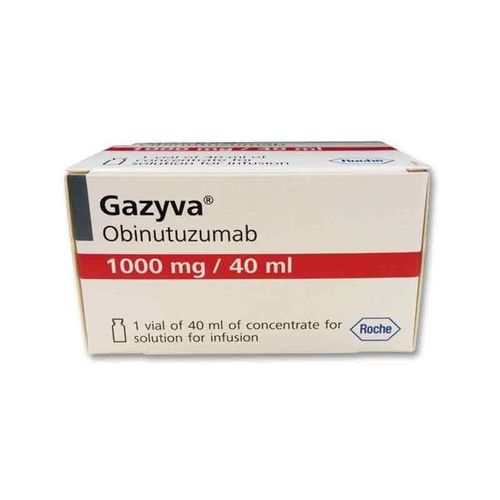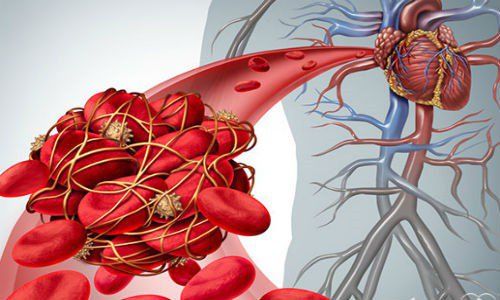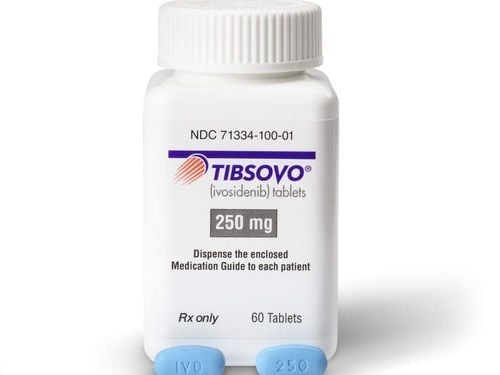This is an automatically translated article.
Skin manifestations of hematologic malignancies are often very diverse due to the variety of pathogens. The disease can be primary or secondary due to dysfunction of blood cells such as infection, purpura, anemia, etc. Depending on the cell origin, the disease has other skin manifestations. such as: infection, pyoderma gangrenosum, sweet's syndrome,...
1. Skin manifestations due to infectious causes
White blood cells are one of the cells that have an important function in the immune system, especially during infections. Therefore, if leukocyte dysfunction increases the risk of local and systemic infections. Skin manifestations due to infectious etiology include:
Abscesses, skin ulcers: common causes are staphylococcus aureus infections, pus-green bacilli Ulcer surface granulomas: due to mycobacterium infection Cellulitis: due to Severe and widespread viral infections such as shingles, HPV virus, Herpes simplex virus. Sepsis: is a severe case that can be caused by mucocutaneous candidiasis, visceral candidiasis.
2. Skin manifestations due to immune disorders
Sweet's syndrome and pyoderma gangrenosum are two common manifestations in the group of leukemias caused by infiltration of many neutrophils in the skin. The pathogenesis of immune disorders is unclear, but is strongly associated with hematologic malignancies.
Sweet's syndrome: manifests sudden symptoms, many nodules appear on the skin and is accompanied by fever, increased neutrophils in the blood. Skin manifestations include red patches under the skin, pain and possibly ulcers. Sweet's syndrome, systemic corticosteroid therapy responds well. The disease is common in the group of acute myeloid leukemia and multiple myeloma. Pyoderma gangrenosum: skin manifestations are painful lumps, lumps, and nodules. These nodules quickly rupture to form jagged, purple-red sores. Pyoderma gangrenosum recurs many times and is common at sites of microtrauma. Treatment with systemic corticosteroids responds well. The disease is also common in the group of acute myeloid leukemia, multiple myeloma.
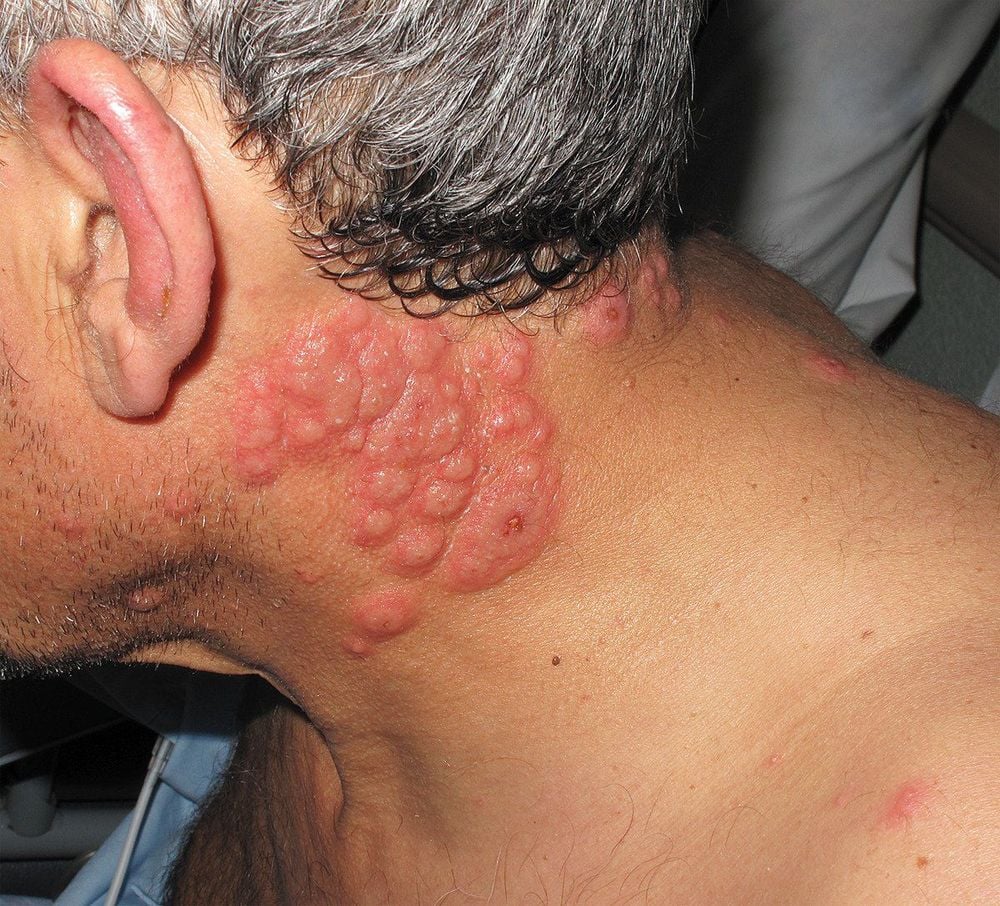
Hội chứng Sweet với biểu hiện ngoài da xuất hiện nhiều nodule
3. Skin manifestations of T-cell lymphoma
T-cell lymphoma of cutaneous onset when malignant T cells in the body initially migrate to the skin, giving rise to various lesions. Depending on the progression of the disease, the appearance of the skin lesions changes. Usually a rash that can be very itchy at first, then forms plaques and tumors before spreading to other parts of the body. T-cell lymphomas have many different disease groups and are classified into:
Mycosis Fungoid Other forms of MF: mycosis fungoides, tropic foliculin, pagetoid reticulosis, granulomatous slack skin. Sezary syndrome cutaneous T-lymphoma in adults CD 30 (+) cutaneous T-lymphoma includes: papillary lymphoma and large cell lymphoma. Inflammatory subcutaneous adipose-type lymphoma T-cell lymphoma/extranodal infection 3.1 Skin manifestations in mycosis fungoid (MF) Mycosis fungoid is the most common form of cutaneous T-cell lymphoma. First described by Alibert in 1806 with the name "fungal warts". Mycosis fungoid form accounts for 50% of all cutaneous lymphomas, usually in the age group 50-60 years old, male/female ratio = 2/1. Clinical manifestations in this form are very diverse through each stage:
Macular stage: skin manifestations are similar to atopic dermatitis, chronic eczema. Histopathological picture is difficult to differentiate, sometimes nonspecific inflammatory skin condition, or manifests multiple inflammatory cell infiltrates, lichenoid lymphoid infiltrate Plaque stage: psoriatic squamous squamous cell carcinoma Tumor stage: manifest generalized erythema and possibly progression to Sezary syndrome. The histopathological picture showed Pautrier microabscess and many abnormal nuclei, corpus callosum, large size, diffuse inflammatory infiltrate, and more lymphocytes.
3.2 Skin manifestations of Sézary syndrome Sézary syndrome is characterized by generalized redness of the skin, accompanied by enlarged lymph nodes and the presence of Sezary cells in the blood. The disease may progress from mycosis fungoid (MF) or primary. About 15% of patients with Fungoid Mycosis develop Sezary syndrome. Prognosis is poor, most patients have a survival time of less than 3 years from the time of diagnosis.
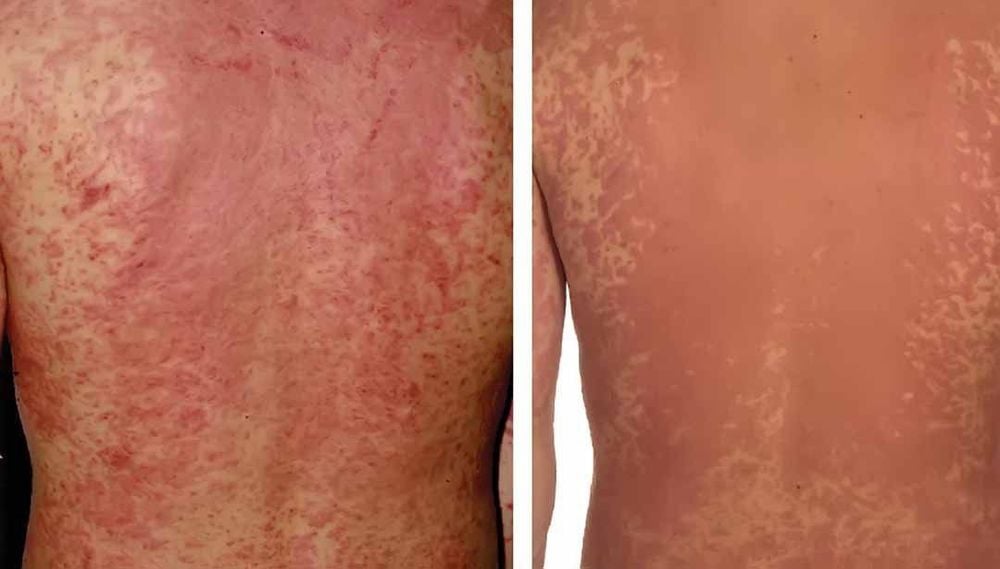
Hội chứng Sézary với biểu hiện đỏ da toàn thân
Redness of the whole body Infiltrative tumors on the skin Keratosis of palms and feet Enlarged lymph nodes Secondary infection Brittle, brittle nails, dystrophy Hair loss, labia (late stage). Severe itching, cold spines. The subclinical manifestations of Sézary syndrome used as diagnostic criteria include:
The absolute number of Sezary cells in the blood greater than 1000/mm3 of blood Increased CD4+ cell count, CD4/CD8 ratio 10 CD7 deficiency: loss of stem T cell marker Lymphocyte count increases.
4. Skin manifestations of B-cell lymphoma
B-cell lymphoma has cutaneous manifestations including: raised red or erythematous nodules on the skin, with smooth and glossy surface features. B-cell lymphoma tends to recur, but rarely develops into a systemic lymphoma. Although relapsing disease occurs in nearly 50% of people diagnosed after a complete response to initial treatment, the prognosis is usually very good. B-cell lymphoma affects men and women equally and can affect any age.
There are many different clinical forms:
Primary B lymphoma in the center of the cyst: is the most common form of B-lineage lymphoma in the skin. Skin manifestations may manifest as a lump or multiple pink or pale red nodules, usually on the head, neck, or trunk. This type of hematologic malignancy usually progresses slowly over many months or possibly years. Cystic B-lymphoma: is the second most common type of cutaneous B-lymphoma. The appearance of this malignancy is the appearance of pink or red nodules, rashes, and lumps, commonly found on the extremities, but can occur anywhere on the body. Diffuse large B-cell lymphoma, leg type: less common, but usually rapid-growing, growing over weeks or months. The skin manifestation of the disease is a red or reddish lump on the bottom of the lower leg, but lesions can occur on any part of the body. Tumors often grow into large, wide tumors that go deep under the skin to form ulcers. Diffuse large B-cell lymphoma, other type: is a very rare form, the tumor appears on the trunk or the head, extremities.
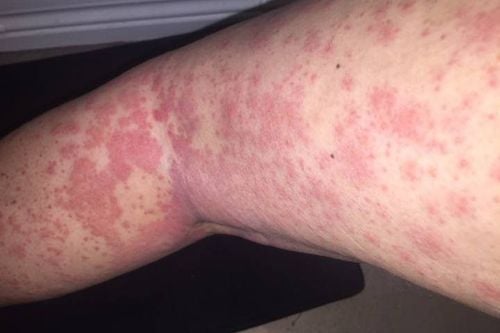
Biểu hiện trên da trong u lymphô dòng tế bào T
In a nutshell, hematologic malignancies are cancers that affect blood cells, lymph nodes, and bone marrow. Skin manifestations of blood malignancies are often very diverse depending on the causative agent such as: infection, pyoderma gangrenosum, sweet syndrome, sezary syndrome, mycosis fungoid,...
Accordingly, For early diagnosis of malignant blood diseases, patients need to have regular health checkups. For high-risk subjects, and at the same time with family members who have had malignant blood diseases, it is necessary to go to the doctor and screen for cancer early.
Early cancer screening is considered the "golden key" for early detection and effective cancer prevention and treatment regimens, thereby reducing the risk of death and reducing costs for people. sick. Currently, Vinmec has been a leading medical facility in the field of early detection of cancer, whereby the high-tech cancer screening package at Vinmec gives you the opportunity to screen and develop Timely detection of disease warning risks to optimize treatment efficiency and improve quality of life.
Please dial HOTLINE for more information or register for an appointment HERE. Download MyVinmec app to make appointments faster and to manage your bookings easily.





